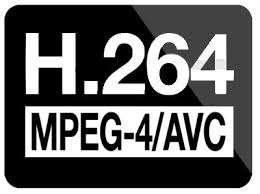Come see us at CES in Vegas
Welcome to the biggest gadget show of the year. Over 170,000 people gather in Las Vegas to discuss the very latest tech for drones, VR/AR, robots, IoT, mobiles, and 8K displays. CES has also become a key automotive show and many major OEMs and Tier 1s will be demonstrating their latest developments. Our CES reports from 2015 and 2016 show that computer vision and imaging were key topics at CES in previous years, and we’re looking forward to witnessing even more buzz around it this year.
We’ll be showing several computer vision demonstrations in our private suite: Structure from Motion for 3D reconstruction, different object detectors, our computer vision acceleration library, and low-delay H.264 video coding for the rapidly growing automotive Ethernet, all running in silicon on our own multicore, high-performance, low-power v-MP4000HDX processor architecture.
Contact us to secure your meeting today.
10 reasons your H.264 codec isn’t good enough for automotive

H.264 has been around since 2003 and many SOCs support encoding or decoding H.264-codec bitstreams. So if your camera supports H.264 and your head unit SOC supports H.264 then you’re all set right? Unfortunately, things are not that simple. There are many variants and different ways to implement an H.264 codec. Simply “supporting H.264” isn’t enough. In this article we’ll highlight 10 areas where automotive H.264 is significantly different from H.264 for consumer applications.
Industry news
Artificial intelligence going open source
The past couple of weeks saw several key AI and machine vision initiatives open-sourcing their projects. The OpenAI non-profit released Universe, a software platform for measuring and training an AI’s general intelligence across the world’s supply of games, websites and other applications. Goal is to develop intelligent agents that learn just like humans do. Google’s Deepmind, which last year developed the first computer program to beat a world-class Go player, released their DeepMind Lab, which has a similar goal of providing simulated environments to serve as “laboratories” for AI research. Comma.ai open sourced an advanced driver assistance system in order to help accelerate the future of self driving cars and provide a platform anyone can build on top of. Goal is to become the “Android of self-driving cars”.
AI broke Steve Jobs’ Wall of Secrecy
AI researcher Russ Salakhutdinov made headlines when he said he was going to start publishing journal articles and spending time talking to academics. That wouldn’t be news, except that he works for Apple — a company famous for an extreme breed of corporate secrecy. If Apple wants to keep up with Facebook and the other big names that have already embraced AI so completely — Google, Microsoft, the Elon Musk-backed startup OpenAI — Apple must share research as these others have done.
Upcoming events
| CES | Jan 5–8, Las Vegas | Come meet with us in our private suite 1210 at the Westgate hotel at the convention center. |
| Mobile World Congress | Feb 27–Mar 2, Barcelona | See us at the largest mobile event of the year. |
Schedule a meeting with us by sending an email to sales@videantis.com. We’re always interested in discussing your video and vision SOC design ideas and challenges. We look forward to talking with you!

